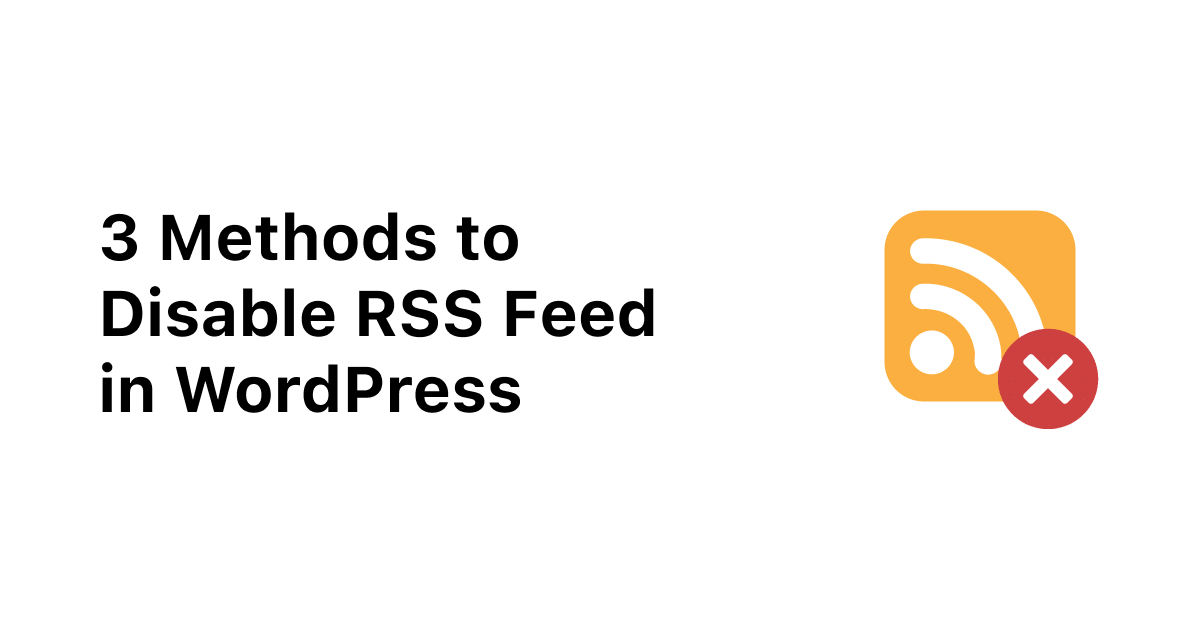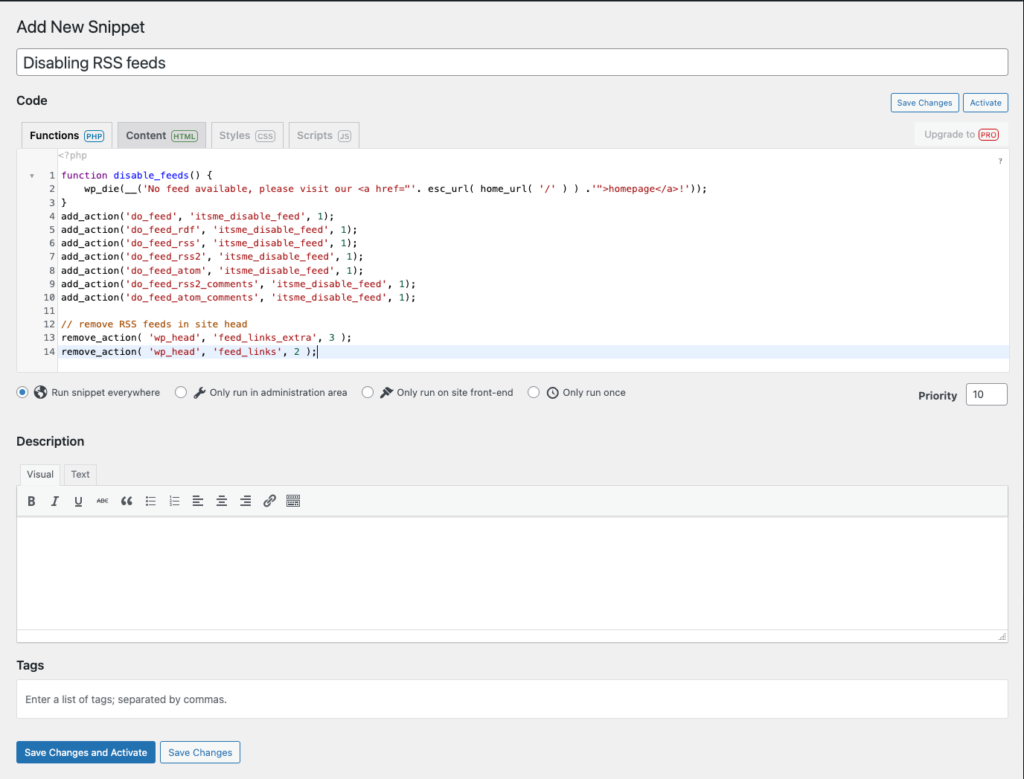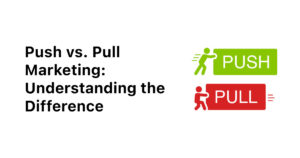3 Methods to Disable RSS Feed WordPress
Discover three effective techniques to disable RSS feeds in WordPress. Whether through plugins(Automatic) or manual code edits, take control of your website’s content distribution.

WordPress, with its myriad of features and functionalities, offers users the ability to syndicate content via RSS feeds. However, there are instances where website owners may prefer to disable this feature. In this article, we’ll explore the reasons behind disabling RSS feeds in WordPress and how to accomplish this task effectively.
What is an RSS Feed?
RSS (Rich Site Summary) feed is a standardized format used to publish frequently updated content such as blog posts, news headlines, audio, and video. It allows users to subscribe to their favorite websites and receive updates in a centralized location, known as a feed reader.
Why Disable RSS Feed in WordPress?
While RSS feeds can be beneficial for content distribution and audience engagement, there are several reasons why website owners may opt to disable them:
Content Control
Disabling RSS feeds gives website owners more control over how their content is consumed. By restricting access to the content via RSS, they can encourage users to visit their website directly, increasing engagement and ad revenue.
SEO Considerations
Having duplicate content across multiple platforms, including RSS feeds, can potentially harm SEO efforts. Disabling RSS feeds can help mitigate this risk by ensuring that only the website’s main content is indexed by search engines.
Security Concerns
RSS feeds can sometimes be exploited by malicious actors to scrape content or launch attacks. Disabling RSS feeds can be a proactive measure to enhance website security and protect against potential vulnerabilities.
How to Disable RSS Feed in WordPress
Disabling RSS feeds in WordPress can be accomplished using various methods. Below are three effective approaches:
- Method 1: Disable RSS Feed using a Plugin – Automatic
- Method 2: Disable RSS Feed by using code – Manual
- Method 3: Hiding RSS Feed from Search Engines without disabling it (article)
1. Disable RSS Feed using a Plugin
To disable the WordPress RSS feed using a plugin, the first method involves utilizing a free plugin such as Disable Everything.
This handy tool efficiently disables all RSS/Atom feeds and feed links on your WordPress website by seamlessly redirecting all corresponding requests.
You can easily acquire Disable Everything from the WordPress repository or directly through your WordPress dashboard by navigating to the “Add New” plugins section.

Once installed and activated, accessing the Disable Everything settings area enables you to effortlessly disable all RSS feeds and associated feed links with a simple checkbox selection.

2. Disable RSS Feed by using code
The second method to disable a WordPress RSS feed is to simply use code.
function disable_feeds() {
wp_die(__('No feed available, please visit our <a href="'. esc_url( home_url( '/' ) ) .'">homepage</a>!'));
}
add_action('do_feed', 'itsme_disable_feed', 1);
add_action('do_feed_rdf', 'itsme_disable_feed', 1);
add_action('do_feed_rss', 'itsme_disable_feed', 1);
add_action('do_feed_rss2', 'itsme_disable_feed', 1);
add_action('do_feed_atom', 'itsme_disable_feed', 1);
add_action('do_feed_rss2_comments', 'itsme_disable_feed', 1);
add_action('do_feed_atom_comments', 'itsme_disable_feed', 1);
// remove RSS feeds in site head
remove_action( 'wp_head', 'feed_links_extra', 3 );
remove_action( 'wp_head', 'feed_links', 2 );Editing Functions.php
- Before you begin, make a backup and use a child theme. This way, your changes won’t disappear if you update your theme.
- Access your WordPress theme’s functions.php file via the theme editor or FTP.
- Then, just copy the code snippet above into your child theme’s functions.php file.
Using Code Snippets Plugin
1. Install the Plugin: Search for and activate the “Code Snippets” or “WPCode” plugin in the WordPress plugin install page.

2. Find the “Snippets” menu item in the WordPress dashboard sidebar. Click on “Add New” within the Code Snippets to create a new code snippet.
3. Title your snippet and paste the provided code for Disabling RSS feeds. Add the code snippet above with the provided code from Method 2 to disable RSS feeds.

4. Click on “Save Changes and Activate” to save your changes. Confirm the snippet is active in the list of snippets and check your website to ensure the RSS feed is disabled as intended using instructions in the following section.
Confirming if RSS Feed is disabled
After implementing the steps to disable RSS feeds in WordPress, it’s essential to confirm that your modifications have taken effect. Here’s how you can verify the changes.
When a visitor attempts to access an RSS feed on your site, such as domain.com/feed, they should encounter a message indicating that the RSS feed is disabled. This prevents users from accessing the feed content directly.

Additionally, WordPress automatically generates links to RSS feeds within your webpage’s header. By disabling the RSS feed functionality, these links should no longer be present in your site’s <head> HTML element. This ensures a seamless user experience without any prompts or indications of RSS feed availability.
Best Practices for Disabling RSS Feed
When disabling RSS feeds in WordPress, consider the following best practices:
- Regularly monitor website analytics and Google search console to assess the impact of disabling RSS feeds on traffic and engagement.
- Communicate the change to your audience through blog posts or announcements to avoid confusion.
- Implement redirects for RSS feed URLs to guide users to relevant website pages.
- Keep WordPress core, themes, and plugins updated to ensure compatibility and security.
Potential Issues and Troubleshooting
While disabling RSS feeds is relatively straightforward, there may be instances where issues arise. Common problems include:
- Incompatibility with certain themes or plugins.
- Incorrect implementation of code snippets or plugin settings.
- Unexpected changes in website traffic or user behavior.
If you encounter any issues, refer to the plugin documentation or seek assistance from WordPress support forums or developers.
Conclusion
Disabling RSS feeds in WordPress can offer website owners greater control over their content, improve SEO performance, and enhance security. By following the methods outlined in this article and adhering to best practices, you can effectively manage RSS feeds and optimize your WordPress website for better performance and security.
FAQs
Can I disable RSS feeds for specific post categories only?
Yes, using certain plugins or custom code snippets, you can selectively disable RSS feeds for specific post types or categories while keeping them active for others.
Will disabling RSS feeds affect my website’s SEO?
Disabling RSS feeds is unlikely to have a significant impact on SEO, provided that you properly manage redirects and ensure that your main content remains accessible to search engines.
Can I re-enable RSS feeds if needed in the future?
Yes, you can easily re-enable RSS feeds by reversing the steps outlined in this article or by deactivating the plugins used for disabling feeds.
Will disabling RSS feeds reduce my website’s server load?
While disabling RSS feeds may slightly reduce server load by eliminating the need to generate feed content, the impact on overall server performance is typically minimal.
Are there any alternative methods for syndicating content besides RSS feeds?
Yes, alternative methods such as email newsletters, social media sharing, and content syndication platforms offer ways to distribute content to a wider audience without relying on RSS feeds.


